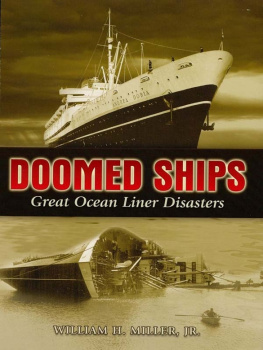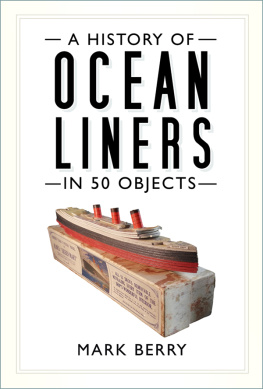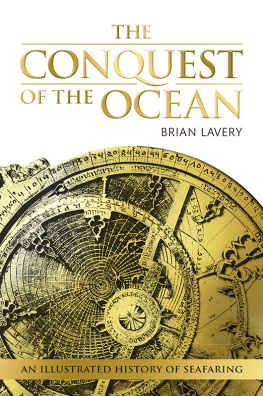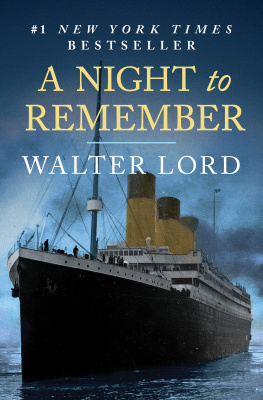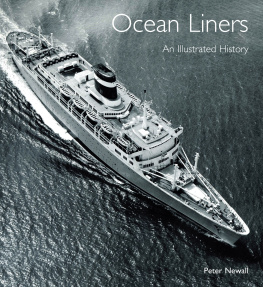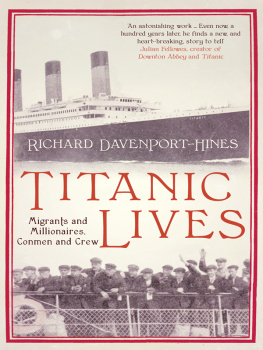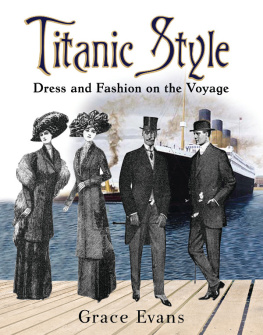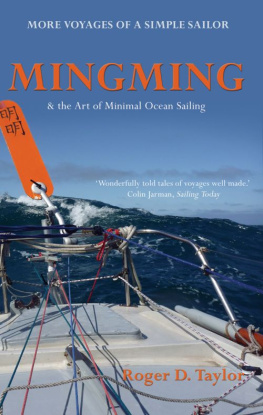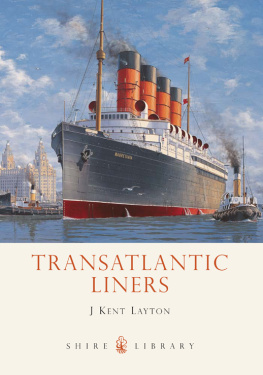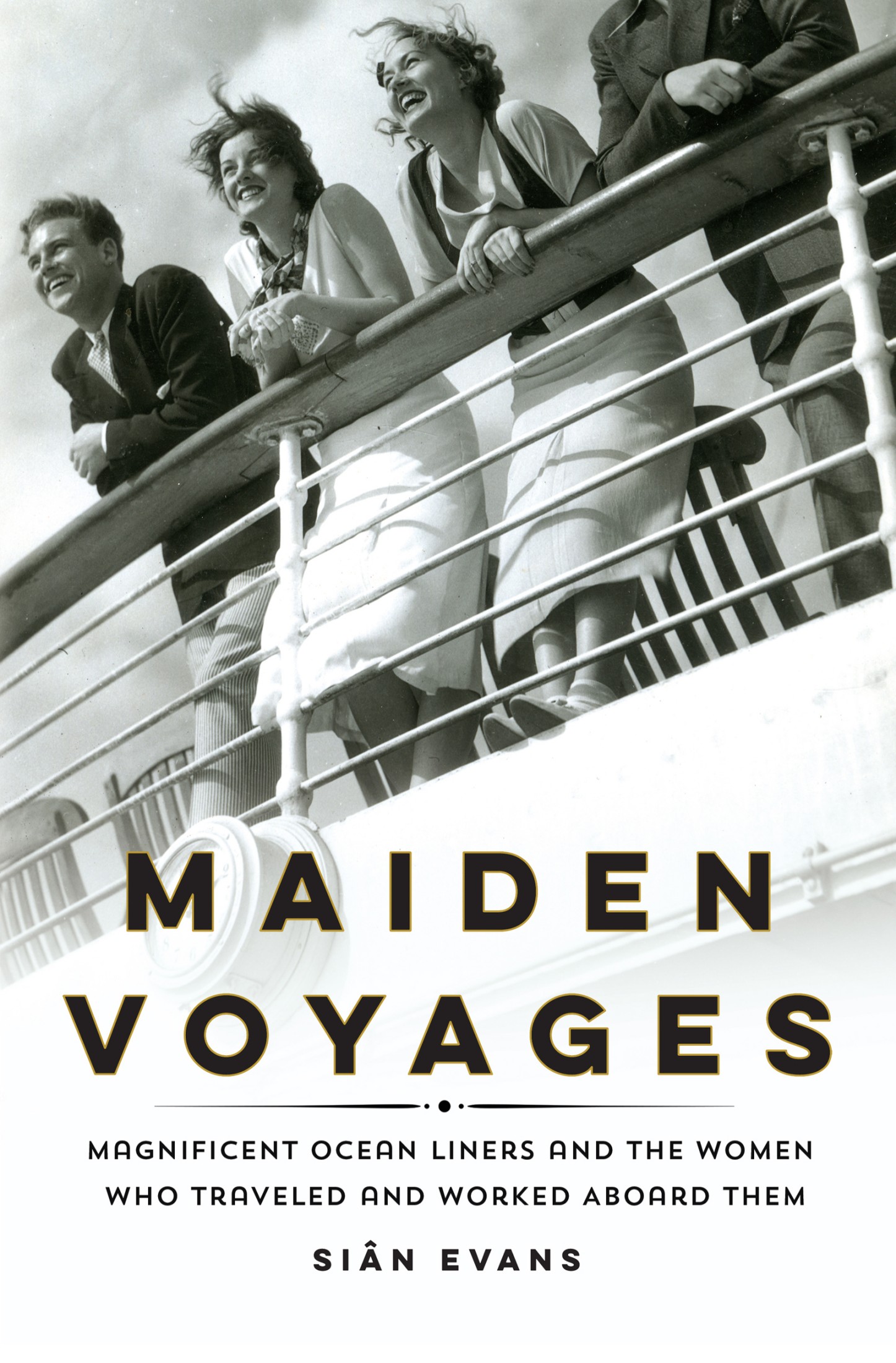
The author and publisher have provided this e-book to you for your personal use only. You may not make this e-book publicly available in any way. Copyright infringement is against the law. If you believe the copy of this e-book you are reading infringes on the authors copyright, please notify the publisher at: us.macmillanusa.com/piracy.
For my sister Sarah, best friend and fellow traveller.
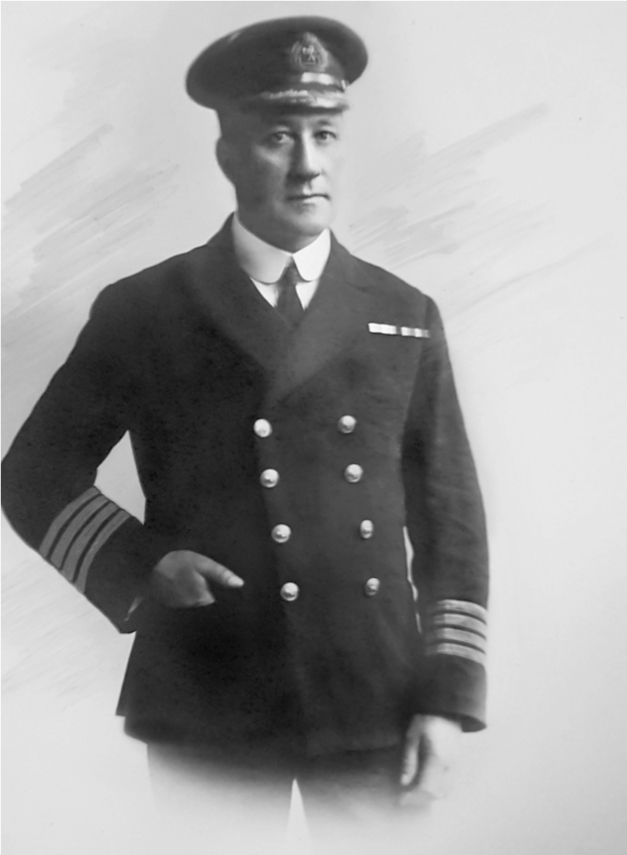
Cunard Chief Officer Stephen Gronow of the Aquitania was the authors great-great uncle. Researching his story, and that of his shipmates, male and female, led to this book.
Josephine Baker (190675)
African-American dancer and singer of consummate ability. Born in St Louis, Missouri, she was talent-spotted in New York and in 1925 she sailed to France to perform with other black artistes in La Revue Ngre. Josephines talent and personality shone in Paris, her adopted city.
Tallulah Bankhead (190268)
American-born actress of original and startling talent, whose stage career on both sides of the Atlantic gained considerable acclaim, but whose everyday behaviour was outrageous. She benefited from the symbiotic nature of British and American showbusiness and society in the 1920s.
Victoria Drummond, MBE (18941978)
Named after her godmother, Queen Victoria, she was a pioneering woman seafarer, who served as a ships engineer during the Second World War.
Thelma Furness (190470)
A twice-divorced American banking heiress and frequent transatlantic traveller, who often accompanied by her twin sister Gloria Vanderbilt, Thelma was the long-standing mistress of the Prince of Wales.
Martha Gellhorn (190898)
American-born writer and war correspondent with a sixty-year career and survivor of a marriage to Ernest Hemingway.
Hilda James (190482)
Olympic swimming champion from Liverpool who was employed by Cunard, first as a swimming coach and later as a social hostess.
Violet Jessop (18871971)
To support her family, nave and unworldly Violet went to sea as a transatlantic stewardess aged twenty-one, and rapidly learned a great deal about human nature.
Nin Kilburn
Born into a Liverpool sea-going family, Nin lost a sister who was working on the Lusitania when it was sunk in 1915. Unable to find work as a schoolteacher in the 1930s, Nin went to sea, and achieved rapid promotion.
Hedy Lamarr (19142000)
Viennese-born actress who escaped a repressive marriage to a pro-Nazi Austrian arms dealer, and secured herself a future as a Hollywood star during a transatlantic voyage.
Mary Anne MacLeod (19122000)
The youngest child of ten born to a Scottish crofter, Mary Anne escaped her impoverished and depressed home island of Lewis by buying a one-way third-class ticket on a ship sailing to New York, seeking work as a domestic servant.
Maida Nixson (b?1954)
Former journalist, writer, bank clerk and soft toy designer who became a stewardess in 1937 out of desperation and, to her surprise, loved the job. Her highly readable and enjoyable book, Ring Twice for the Stewardess, was published in the same year as her death.
Marie Riffelmacher
Fifteen years old in 1923, Marie was an economic migrant from Altenberg who escaped the turmoil of 1920s post-war Germany by embarking on a ship for America.
Edith Sowerbutts (18961992)
A much travelled and feisty character who enjoyed being a conductress caring for unaccompanied women and children on the North Atlantic route between 1925 and 1931. She later became a stewardess for Cunard/White Star Line.
Smart and snug in heather-toned tweeds, a British-born lady passenger of middle years and independent means is settled in a teak steamer-chair on the promenade deck of an ocean liner heading west across the Atlantic. There is a whiff of healthy ozone from the sea, and fellow travellers taking the air variously saunter or speed past, competing for laps, heading to the gym or to the swimming pool. The attentive deck steward proffers a steaming mug of bouillon. So effective against seasickness, but, in order to be sure, shell take another Mothersills tablet. Just as that kind stewardess had predicted, the heaving swell of the Atlantic Ocean once they passed Ireland had proved to be a little too lively for comfort. Yesterday had crawled by in a disorientating, low-lit blur; she had spent hours wedged into her bunk, lying prone, wishing for death, while keeping an eye on the discreetly positioned vase de nuit, just in case. But this morning she had woken with the appetite of a Bootle-born coal stoker.
She had rung the bell (twice for the stewardess; a single ring would summon the steward, which would breach etiquette), and requested a fully-laden breakfast tray of kippers, tea and toast. Her equilibrium has now been restored in every sense; standing with her feet at the ten to two ballet position for maximum stability, her knees slightly bent, as the stewardess tactfully suggested, also seems to help.
Bathed, dressed and ready to face the world, our heroine has ventured out onto the covered deck and secured a reclining chair. Her thoughts turn to her fellow passengers: she must trawl through the alphabetically arranged list of first-class passengers names left prominently in her cabin to see if she knows anyone else on board, or can spot anyone she might like to meet. Society is superior to variety, and she is hoping to make the acquaintance of the elite also travelling in first class. In particular, she is looking out for a pleasant, well-heeled bachelor, as there is rather a dearth of those at home, just a few years after the end of the Great War. Perhaps shell do better in America, Land of Opportunity.
Opportunities abound for sociable, single, wealthy, transatlantic female passengers; according to the daily newspaper printed every night on board, there is a tea dance this afternoon, with music provided by the pianist, and, after dinner, a concert, followed by dancing to the ships orchestra. Daytime visits to the swimming pool with tutoring from the female coach, the Turkish baths where she is pampered by the masseuse, and restorative sessions with the lady hairdresser promote a sense of wellbeing. In fact, the whole vessel seems to have been deliberately designed to appeal to lady travellers of all stripes. Reassuringly, the grand public rooms recall the better sort of country house. Every room is decked out in a different historical style, as though it had grown gradually, over the centuries, with each generation adding another wing according to the fashion of the day. Odd when you think about it, because this enormous ship was constructed by swarms of men in cloth caps, riveting together great steel plates in somewhere industrial, like Clydebank. With its Palladian-style lounge and Carolean smoking room, the ships interior recalls the smart new hotels now springing up in European and American capitals. No wonder some wag referred to this ship as the Ritzonia.
Meanwhile the stewardess makes final checks of the staterooms of her ladies before the captains daily inspection at 11 a.m. Scrupulously clean and neat in her grey uniform, white cap and apron, she is a company widow, whose husband died when the


